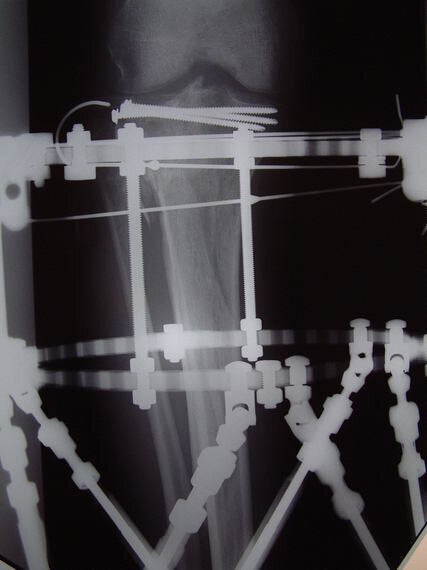
Living with chronic pain and illness can be intolerable. Even after taking the maximum dose of painkillers, the aching soon returns with a vengeance. You want to do something, anything, to stop the pain, but whatever you try seems to fail. Moving hurts. Doing nothing hurts. Ignoring it hurts.
But it's not just the pain that hurts; your mind can start to suffer as you desperately try to find a way of escaping. Pointed and bitter questions can begin nagging at your soul: What will happen if I don't recover? What if it gets worse? I can't cope with this . . . Please, I just want it to stop ...
It's only natural to want to fight back against pain and illness in times such as these, but what if this struggle actually made your suffering worse? What if it was more effective to explore the sensations of pain and illness as they rose and fell in your body? This may seem like the worst thing imaginable, but the latest medical advances show that it can be more powerful than the most commonly prescribed painkillers.
Such an approach forms the core of a new treatment for chronic pain and illness that is based on an ancient form of meditation known as 'mindfulness'. Mindfulness meditation has been shown in clinical trials to reduce chronic pain by 57 percent. Accomplished meditators can reduce it by over 90 percent.
Imaging studies show that mindfulness soothes the brain patterns underlying pain and, over time, these changes take root and alter the structure of the brain itself, so that patients no longer feel pain with the same intensity. Many say that they barely notice it at all.
Hospital pain clinics now prescribe mindfulness meditation to help patients cope with the suffering arising from a wide range of diseases such as cancer (and the side effects of chemotherapy), heart disease, diabetes and arthritis. It is also used for back problems, migraine, fibromyalgia, coeliac disease, chronic fatigue, irritable bowel syndrome and even multiple sclerosis.
As I explain in our book 'Mindfulness: A Practical Guide to Relieving Pain, Reducing Stress and Restoring Wellbeing', meditation achieves these remarkable results because it turns down the 'volume' control on pain.
A typical meditation involves focusing on different parts of the body and simply observing with the mind's eye what you find (see box below). This allows you to see your mind and body in action, to observe painful sensations as they arise, and to let go of struggling with them. When you do this, something remarkable happens: your suffering begins to melt away of its own accord.
After a while you come to the profound realisation that pain comes in two forms: Primary and Secondary. Each of these has very different causes - and understanding this gives you far greater control over your suffering.
Primary pain arises from illness, injury or damage to the body or nervous system. You could see it as the raw information sent by the body to the brain. Secondary pain is the mind's reaction to Primary pain but is often far more intense and long lasting. Crucially, it is controlled by an 'amplifier' in the brain that governs the overall intensity of suffering.
In recent years, scientists have begun to work out how the mind's pain amplifier is controlled, but more importantly they have discovered ways of turning down the 'volume' control on suffering.
It turns out, the human mind does not simply feel pain, it also processes the information that it contains. It teases apart all of the different sensations to try to find their underlying causes so that you can avoid further pain or damage to the body. In effect, the mind zooms in on your pain for a closer look as it tries to find a solution to your suffering. This 'zooming-in' amplifies pain.
As your mind analyses the pain, it also sifts through memories for occasions when you have suffered similarly in the past. It is searching for a pattern, some clues, that will lead to a solution. Trouble is, if you have suffered from pain or illness for months or years, then the mind will have a rich tapestry of painful memories on which to draw - but very few solutions.
So before you know it, your mind can become flooded with unsettling memories. You can become enmeshed in thoughts about your suffering. It can seem as if you've always been ill and in pain, that you've never found a solution and that you never will. You can end up being consumed by future anxieties, stresses and worries as well as physical pain: What will happen if I can't stop this pain? Am I going to spend my life suffering like this? Is it going to keep on getting worse?
This process happens in an instant, before you're consciously aware of it. Each thought builds on the last and quickly turns into a vicious cycle that ends up further amplifying your pain. And it can be worse than this because such stresses and fears feed back into the body to create even more tension and stress. This can aggravate illnesses and injuries, leading to even more pain. It also dampens down the immune system, so impairing healing. So you can all too easily become trapped in a vicious downward spiral that leads to ever greater suffering.
But even worse, such negative spirals can begin wearing tracks in the mind so that you become primed to suffer. Your brain begins fine-tuning itself to sense pain more quickly - and with greater intensity - in a futile bid to try to avoid the worst of it.
Over time, the brain actually becomes better at sensing pain. Brain scans confirm that people who suffer from chronic pain have more brain tissue dedicated to feeling the conscious sensations of pain. It's almost as if the brain has turned up the volume to maximum and doesn't know how to turn it down again.
It's important to emphasise that Secondary pain is real. You do genuinely feel it. It's only called Secondary pain because it is the mind's reaction to Primary pain and has been heavily processed before you consciously feel it. But this same processing also offers a way out; it means you can learn to gain control over pain.
It is possible to learn to step aside from suffering and begin to handle pain very differently indeed. In effect, mindfulness hands back to you the volume control for your pain.
Brain scans confirm this. Mindfulness soothes the circuits that amplify Secondary pain and you can see this process happening in a brain scanner. In effect, mindfulness teaches you how to turn down the volume control on your pain. And as you do so, any anxiety, stress and depression that you may be feeling begins to melt away too. Your body can then relax and begin to heal.
On top of these benefits, hundreds of scientific trials have now shown that mindfulness meditation is extremely good at relieving anxiety, stress, depression, exhaustion and irritability. Memory improves, reaction times become faster and mental and physical stamina increase. In short, regular meditators are happier and more contented than average, while being far less likely to suffer from psychological distress.
Over the next three weeks I'll lead you through three meditations from our book 'Mindfulness: A Practical Guide to Relieving Pain, Reducing Stress and Restoring Wellbeing'. They are based on solid science as well as our own experience.
I used mindfulness to cope with the extreme pain of a paragliding accident. Seven years ago I fell 30 feet onto a rocky hillside. The resulting impact drove the lower half of my right leg several inches through the knee and into my thigh. The injury required three major operations and two years of physiotherapy to correct. I found mindfulness to be an extremely powerul painkiller and I'm convinced it also accelerated my healing.

The aftermath of Danny's paragliding accident.
The programme in the book was developed by my co-author Vidyamala Burch following two serious spinal injuries that left her in continuous pain. This programme has helped tens of thousands of people worldwide cope with pain, suffering and stress.
This week I will lead you through the ten minute Body Scan meditation. Carry it out twice each day. Follow the instructions below, or preferably download the free audio track from www.franticworld.com/huffington
Next week I will lead you through another pain reduction exercise. The following week I will teach you a meditation to dissolve stress and speed recovery.
Dr Danny Penman is the co-author of the bestselling Mindfulness. His latest book 'Mindfulness: A Practical Guide to Relieving Pain, Reducing Stress and Restoring Wellbeing' is published by Piatkus.
Body Scan Meditation
This is best carried out in quiet surroundings. The idea is to hold each region of the body in the mind's eye, observe - or 'feel' - what you find, and then move on to the next area.
You will realise that your mind repeatedly wanders. It's what mind's do, so try not to criticise yourself. When it happens, simply bring your awareness back to the region of the body from where it wandered. Try not to judge what you find. Simply observe. Or perhaps smile inwardly to yourself.
The Scan
Lie on the floor and allow your legs to gently fall away from each other. Place your hands loosely on your stomach. Close your eyes. Sink into the floor. Focus on the natural breath as it flows in and out of the body. Is it deep or shallow? Smooth or 'ragged'? Spend a few minutes feeling the rhythm of the breath in as much detail as you can.
Does the breath 'echo' in the groin? The lower back? What do you find in these regions? Are they warm or cold? Do they ache? Is it sharp or tingly pain? Gently probe the edges, then move closer. Spend a couple of minutes exploring the rhythm of the breath. Do you notice that discomfort is more 'fluid' than you thought? Does it feel more distant and less 'personal' than you expected?
Move your awareness to the middle back and observe what you find for a minute... Then the upper back...
Observe the whole back as one for a few minutes... And the shoulders... The neck... The face... The arms... hands.
Move your awareness through your legs and 'feel' what you find. Do your hips ache? Is it sharp or dull? Gently probe the edges and move inwards. If it begins to feel too intense, gently broaden the focus of your awareness so that you hold the discomfort in a wider space. Does that make it less intense?
And finally, spend a couple of minutes observing the whole body breathing as one.
Gently open your eyes and soak in the world around you. Can you carry this flavour awareness with you as you continue with your day?
You can download the free audio track of this meditation from www.franticworld.com/huffington